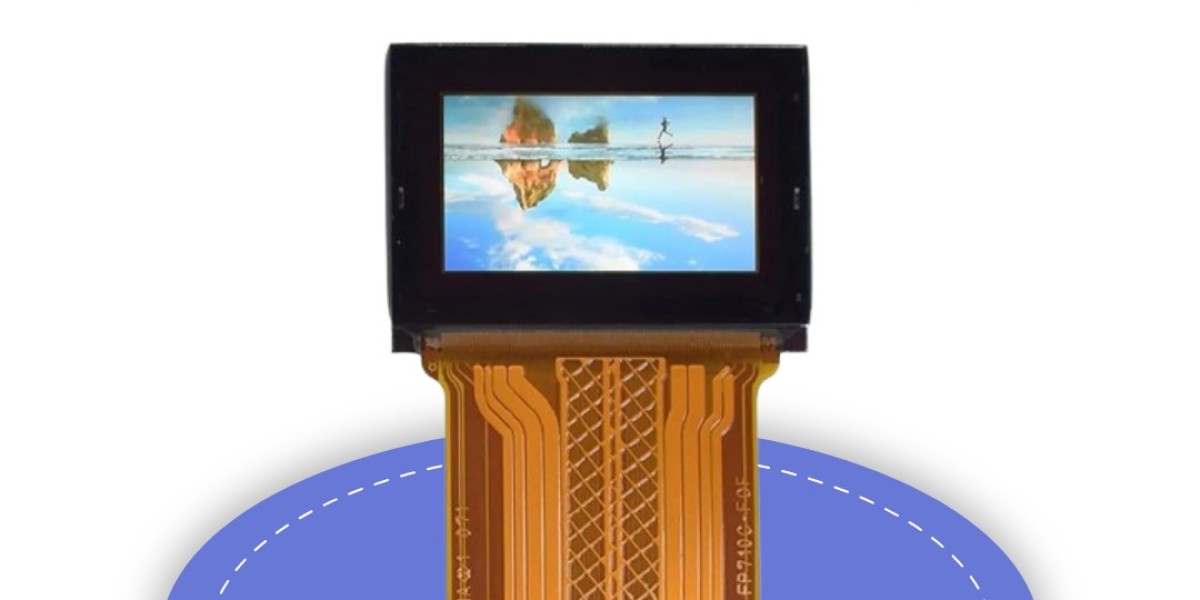Technology is getting smaller, smarter, and sharper. Whether you're using AR glasses, a camera viewfinder, or a wearable device, the screen behind the visuals matters a lot. That’s where the micro display comes in. It’s a small but powerful screen that offers high resolution, bright images, and low power consumption—all in a compact size.
If your device needs a tiny screen with excellent clarity, this guide will help you understand why micro displays are the right fit.
What Is a Micro Display?
A micro display is a very small electronic screen that shows images or videos with sharp resolution. These displays usually range in size from 0.2 to 1 inch but can deliver high-definition or even 4K resolution. Because they are built on silicon or glass substrates, they’re lightweight and energy-efficient.
Micro displays are different from regular screens because they’re designed for devices where space is limited but image quality is essential. These include AR/VR headsets, smart glasses, camera viewfinders, and other compact systems.
Benefits of Micro Displays
Micro displays offer several important advantages:
1. High Resolution in Small Space
Even at under an inch in size, micro displays can show detailed images with more than 1000 pixels per inch (PPI), which is great for close-up viewing.
2. Power Efficiency
They consume less power than traditional LCD or LED screens, making them ideal for battery-operated devices.
3. Lightweight Design
Their small size and thin structure make them perfect for wearable technology and mobile gadgets.
4. Fast Response Times
Micro displays react quickly to input, which is essential in VR, gaming, and live camera feeds.
5. High Contrast and Brightness
Some models, especially OLED-based ones, provide deep blacks and bright whites for sharp image clarity.
Real-World Uses of Micro Displays
Here are some popular uses for micro displays in everyday and industrial products:
AR/VR Headsets – Micro displays power immersive visuals without adding bulk.
Smart Glasses – Lightweight displays provide real-time info in a wearable format.
Camera Viewfinders – High-resolution screens help photographers frame their shots with precision.
Medical Devices – Doctors use them for wearable diagnostics and portable imaging tools.
Military Gear – Used in helmets, scopes, and tactical systems for real-time visuals.
In these use cases, a well-designed micro display enhances both performance and user comfort.
Micro Display vs Traditional Display
Here’s a simple comparison to understand how micro displays differ from traditional LCD or LED screens:
| Feature | Micro Display | Traditional Display |
|---|---|---|
| Size | Under 1 inch | 5–100 inches |
| Resolution | 1000+ PPI | 200–500 PPI |
| Power Usage | Very Low | Moderate to High |
| Application | Wearables, AR, optics | TVs, phones, monitors |
| Weight | Extremely light | Heavier and thicker |
As you can see, micro displays are built for specialized applications, where size and precision are key.
Why Choose Micro Displays for Your Product?
If you're building or upgrading a compact digital device, a micro display offers the right balance of size, speed, and image quality. It helps improve user experience without adding weight or draining battery. Whether you’re developing for the medical field, optics, security, or consumer tech, micro displays deliver visual performance in minimal space.
Conclusion: Small Screen, Big Impact
In today’s fast-moving tech world, it’s important to build products that are both compact and powerful. The micro display plays a major role in making that possible. It brings together sharp visuals, energy efficiency, and portability—everything modern devices need.
Looking for the best display technology for your next device? Explore top-quality micro displays at AR/VR Optical today and take a step toward smarter design and better performance.







